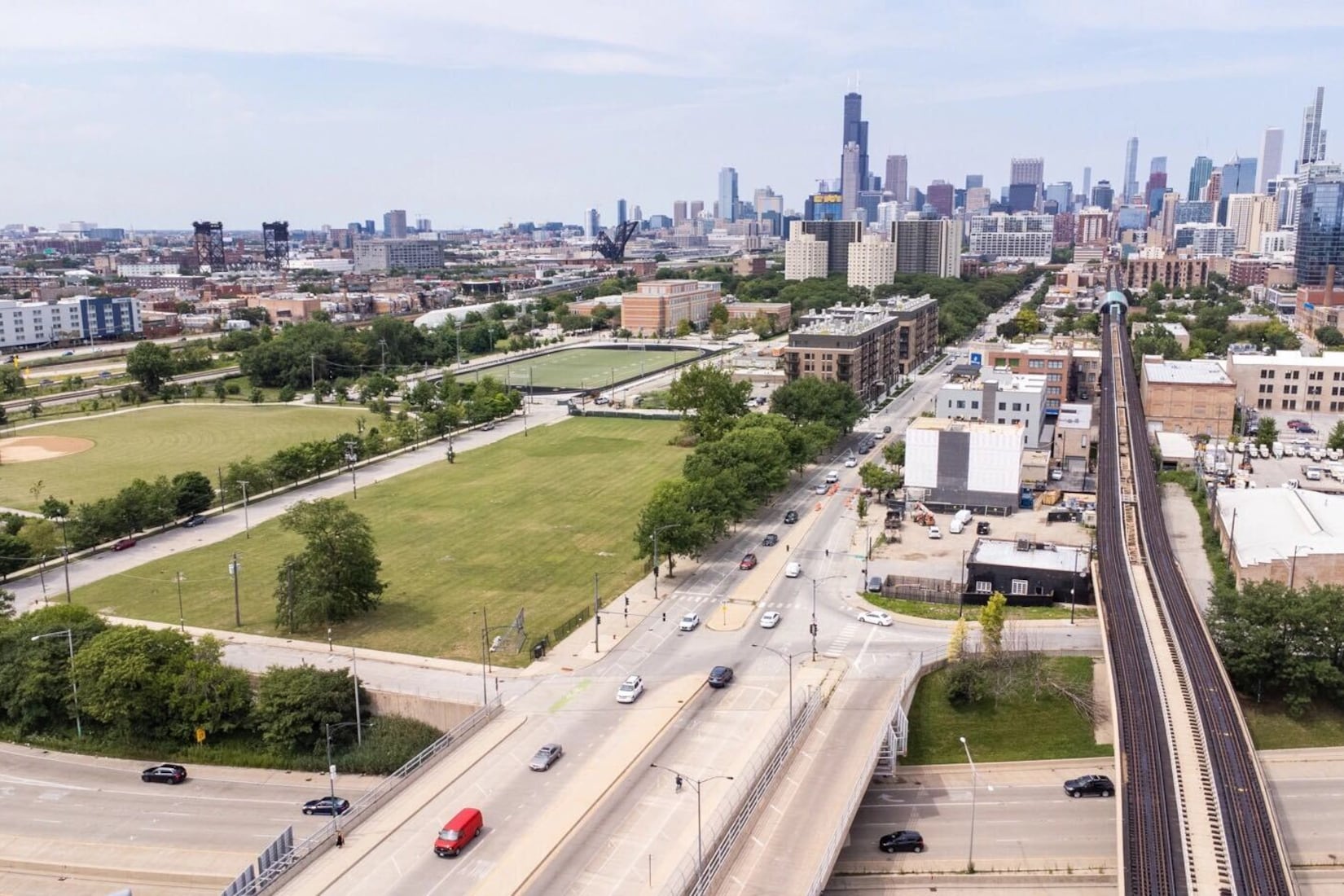A controversial new high school is another step closer to reality after Chicago’s City Council approved $8 million in city funds for the $150 million project.
Five progressive aldermen voted against the measure on Wednesday.
The new high school on the Near South Side has faced opposition from school board members, elected officials, nearby residents, and community members who question the need for another high school as the district continues to hemorrhage students year over year.
Some have argued a new campus would exacerbate under-enrollment at nearby schools. Others have criticized the district’s community engagement efforts and the location of the site — which has long been intended for public housing.
The latest vote allocates $8 million in tax-increment finance — or TIF — money to Chicago Public Schools for the purchase of a cluster of properties near 2450 S. State St., a site previously set aside for affordable housing. The estimated cost has also climbed to $150 million, up from $120 million when the proposal was initially unveiled in spring.
City Council often dedicates tax-increment finance funds to public schools and public parks to supplement the school district’s tight capital budget. So far this year, aldermen have approved $175 million in TIF money for Chicago Public Schools.
During Wednesday’s City Council meeting, Ald. Pat Dowell, who represents the area that would include the high school, said the school would serve students who live in the South Loop, Chinatown, Douglas, and Bridgeport and would offer a diverse learning experience for those students. Those neighborhoods are a mix of Black, Asian, Latino, and white, census data show.
“I think that all children should be educated in that kind of environment where they can learn about different cultures, understand different perspectives and history,” Dowell said. “It bodes well for how you grow up and become an adult.”
Dowell acknowledged the concerns from some aldermen that the new high school would exacerbate low enrollment at existing nearby high schools, but said building a new school is “the right thing to do.”
“Come hell or high water, we’re going to see it to the end,” she said.
During a press conference after Wednesday’s City Council meeting, Mayor Lori Lightfoot argued that the school was supported by residents of Chinatown, South Loop, and Near South Side. Lightfoot cited the growing South Loop population and 90-minute commutes for Chinatown children.
Asked about the increase in cost, she acknowledged construction cost had gone up but said she was committed to getting a new high school to the finish line, citing the growth in elementary-age students in the South Loop.
“I’m confident that the resources will be there to make this high school a reality,” Lightfoot said.
Alds. Matt Martin, Rossana Rodriguez, Jeanette Taylor, Andrew Vasquez, and Byron Sigcho Lopez voted against the approval.
The district unveiled the proposed high school as part of the broader capital budget last spring. Officials budgeted $70 million for the project and said the state would kick in $50 million for the new campus.
The Chicago Board of Education in September narrowly approved the purchase of nearly two acres as part of a land swap agreement with the Chicago Housing Authority for the proposed site. It also approved a separate measure to spend an additional $5 million to plan the new high school.
The Board of Education will still need to approve funding for the construction of the high school. The U.S. Department of Housing and Urban Development will also need to approve the land swap agreement.
Board members who voted no this fall said the new high school would disrupt enrollment at nearby schools and further constrain funding to operate another school.
The plan to build the high school on the former Harold Ickes Homes angered some residents and housing advocates. The CHA promised housing for residents displaced after the public housing high-rise was torn down more than a decade ago.
During the September school board meeting, state Rep. Theresa Mah (D-Chicago), who secured state funding for a new high school, promised to withhold state funds until she was assured the district was having authentic community engagement and considering other sites.
Earlier this week, Chuck Swirsky, senior advisor to CPS’ chief executive officer, told the City Council’s Committee on Finance that the district would be aggressive in its efforts to secure the state grants for the high school.
Ald. David Moore, who voted against the proposal during Monday’s Committee on Finance meeting but in favor of it on Wednesday, reiterated concerns about under enrollment at nearby high schools. He also questioned CHA’s commitment to bring affordable housing back to the area. Since Monday’s meeting, he said he had received letters of support from two groups of residents in the area that swayed him to change his mind.
The residents support the new Near South high school, “so long as the remaining CHA Public Housing Units are built on the footprints of Harold Ickes Southbridge on site — not up the street, down the street, or around the corner,” Moore said during Wednesday’s City Council hearing.
Ald. Nicole Lee, who represents Chinatown, offered her support ahead of the vote, saying it was “a long time coming” for students in the area, many of whom leave the neighborhood for high school.
“Students today who are in the area by this neighborhood open enrollment high school, travel sometimes up to 90 minutes in each direction, costing them really valuable time to be involved with extracurricular activities to do homework,” Lee said at Wednesday’s meeting.
Ald. Walter Burnett offered his support during the city council meeting Wednesday for the high school, saying it would help bring revitalization to the area. “A new school is an economic development engine in a community,” Burnett said.
Mauricio Peña is a reporter for Chalkbeat Chicago, covering K-12 schools. Contact Mauricio at mpena@chalkbeat.org.








